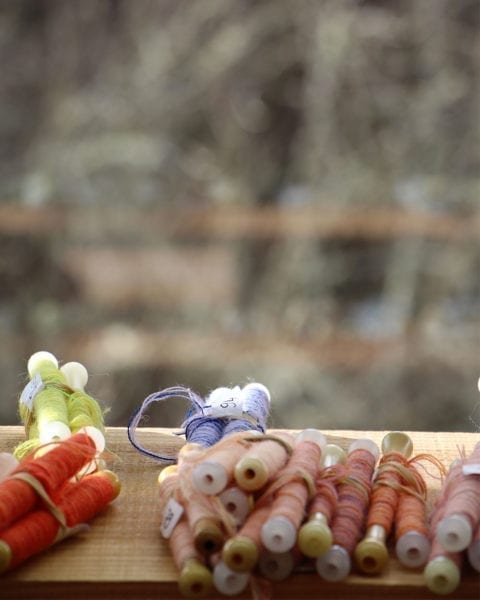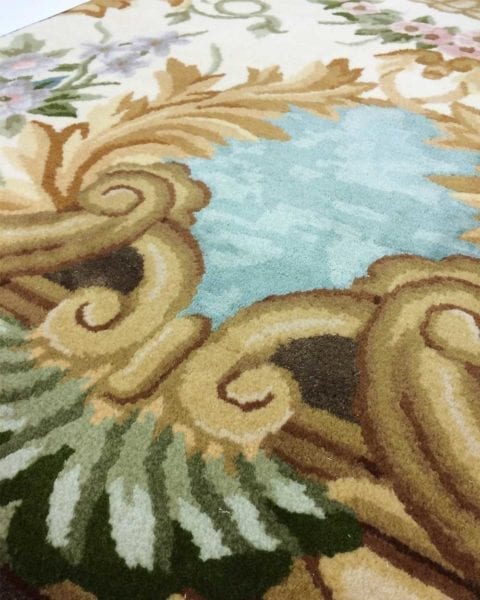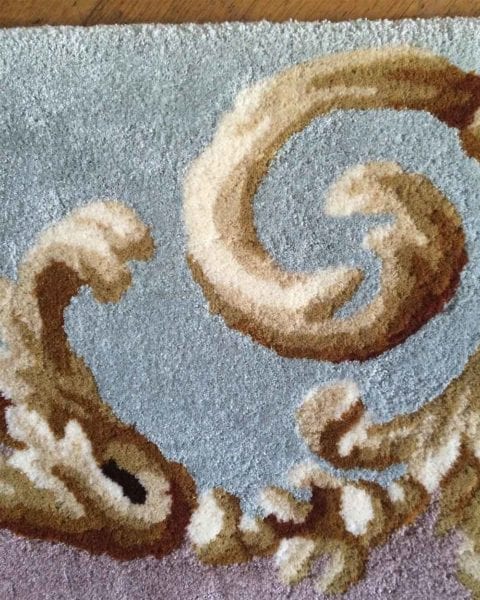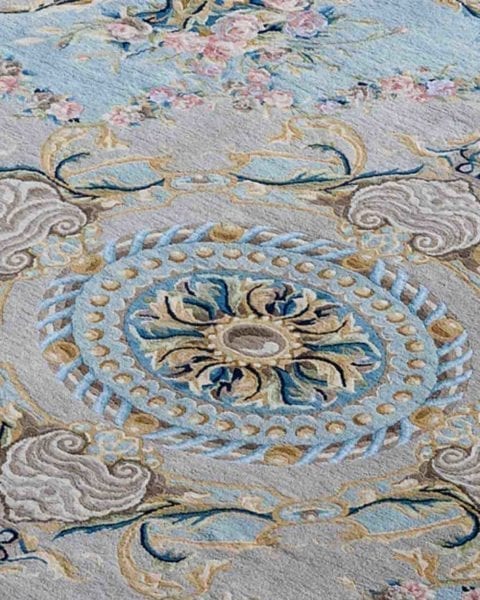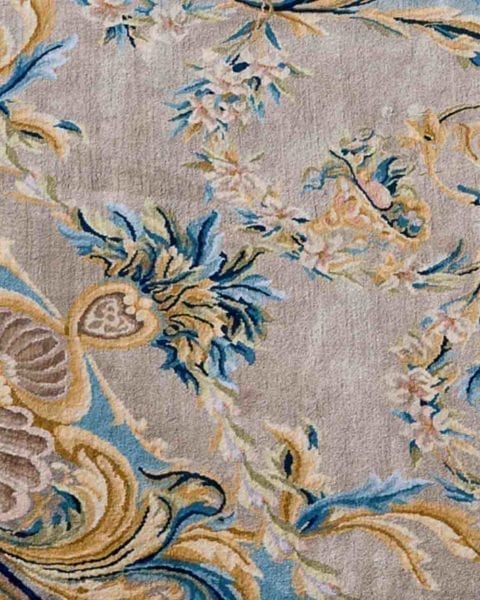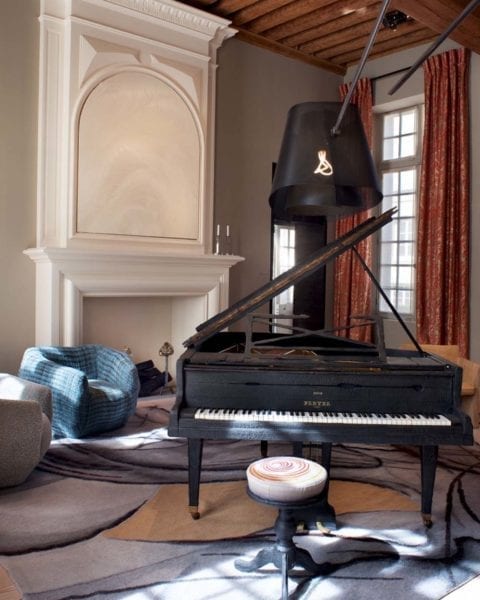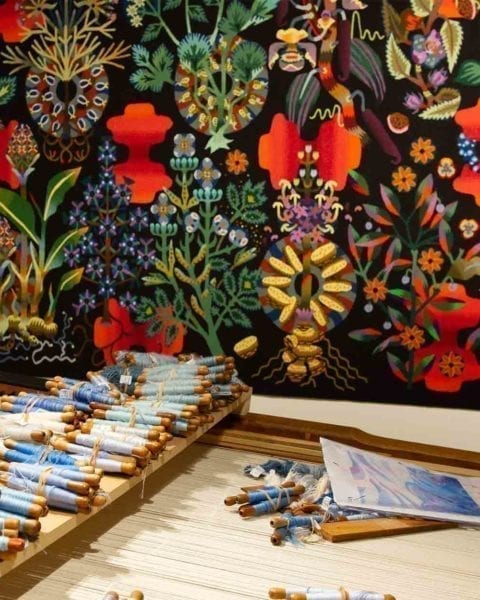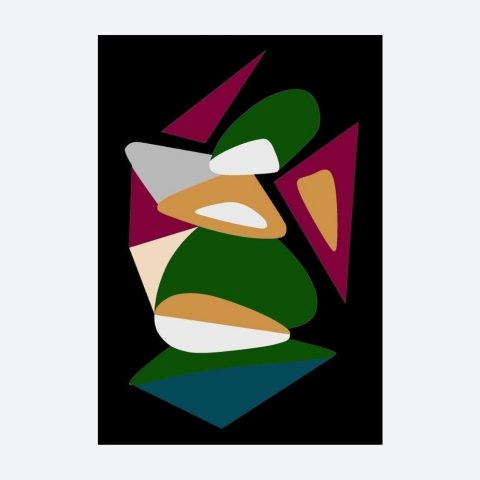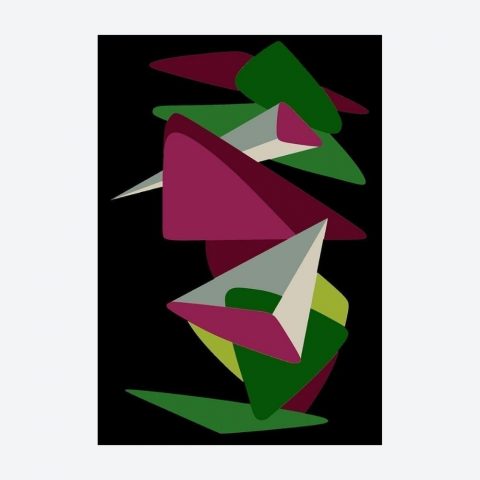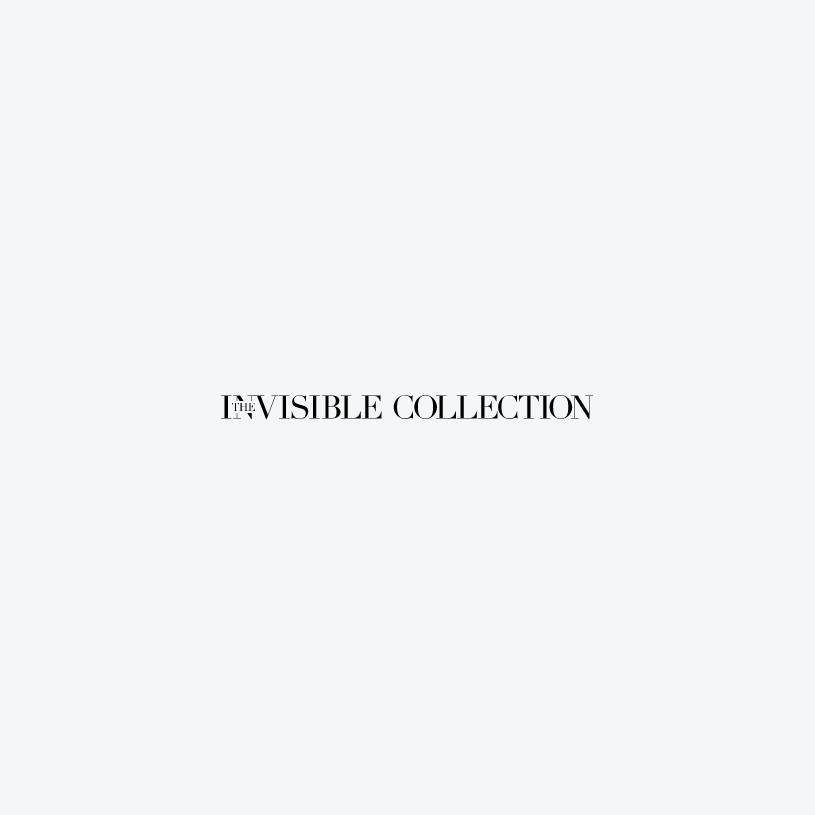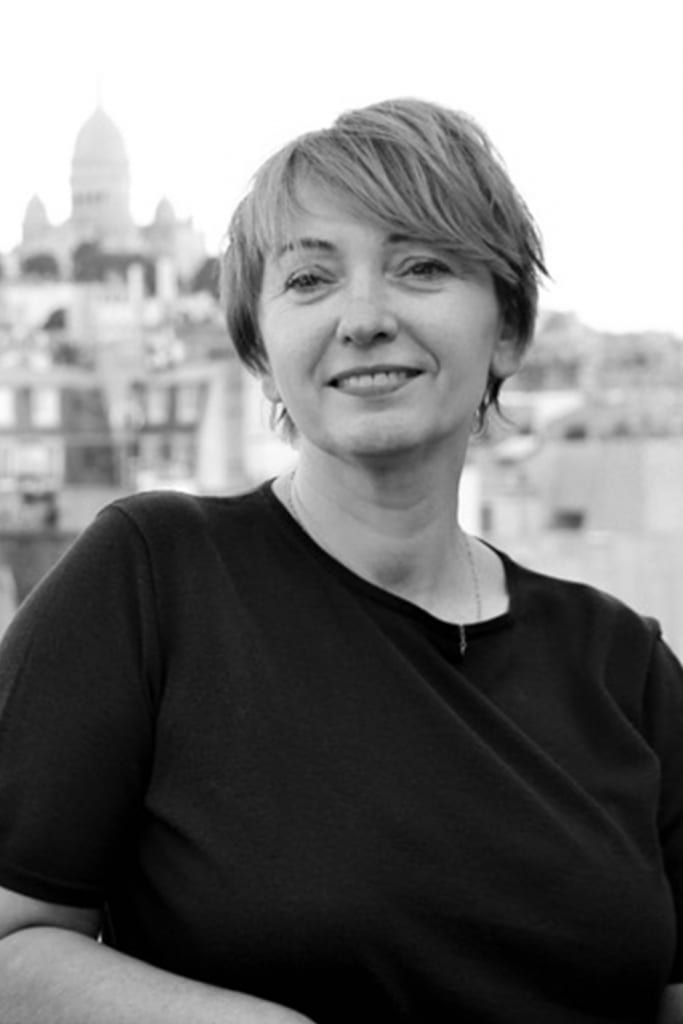
How did you get into this business?
I have always been passionate about art and creativity, but for different reasons, I chose a more classical path, and I attended a business school. It was a great experience, very structuring, since I learned to understand all the aspects and issues of a business, and to interact with all parties. Then, when I joined the fashion house Kenzo, in charge of business development, I learnt a great deal about colours, textiles and the need for renewed creativity every season. At Kenzo, we developed a home collection, mainly fabrics and cushions, planning to expand our offer to furniture. However, furniture was not really our area of competence… So, I thought I could develop a rug collection.
Why rugs?
When we look at History, one of the very first pieces of “furniture” in any given civilisation is a rug! So there I was, reinventing myself as the creative coordinator between a fashion house and a carpet manufacturer. Thanks to mutual friends, I met Tai Ping’s management, –a Hong Kong company, leader in the carpet industry and made to measure rugs– and went to work for them, I took on the artistic direction and created many rug collections. I spent ten extremely enriching and very formative years there, where I developed all my skills, and this notion of collaborative projects at the crossroad of art, design, fashion… I worked in an intuitive way, by developing a style and a point of view, by widening my network, by refining my taste and training my eye to different styles and cultures…
How did you learn the complex techniques of carpet making?
I like to say that I learned the same way one learns to knit with one’s mother… Throughout my collaborations with different manufacturers, from Tai Ping to Robert Four in Aubusson, I have always spent a lot of time with craftsmen and paid a lot of attention to designers in order to push the limits of my know-how and to understand… in short, I learned by observing all those experts…
What did you learn from this first experience?
I learned to listen and to pay attention to the different market cultures, understanding the distinct taste for colours and patterns in each country according to its own history. The reasons for choosing a rug are always different and dictated not only by visual comfort, but also by one’s lifestyle and home, one’s cultural and artistic background. My role has always been to be on the lookout for innovation and trends, so we push back the technical limits when creating a rug: we look for different thicknesses, we add new materials, and we reinterpret the motifs… I have done this for 10 years, exploring all cultures and learning new things with each new order.
What made you come back to France?
The incredible French know-how that was disappearing. I spent 10 years working for an Asian company; I wanted to return to the very heart of this exceptional craft. During one of my trips to Aubusson, I met the people in charge of Robert Four, one of the last manufacturers that perpetuates a know-how in rugs and tapestry dating back five centuries. A very well structured and very innovative company: I told myself that with them I could create highly artistic pieces and participate to revamp the art of tapestry, one of the jewels of French decorative arts.
Do you think that today there is an interest in tapestry?
Absolutely! There are customers all over the world – Americans, Chinese, and Russians – who discover these magnificent works. At first, they start learning and acquiring their taste by buying ancient restored tapestries in antiques galleries, but then, little by little, they will be interested in the more contemporary versions. It is this idea of collaboration among a client, an artist and the Robert Four manufacture that interests me: creating new works of art that tell the story of their time. I like being able to address customers who want a high-end product that refers to heritage and contemporary art.
What attracted you to The Invisible Collection?
Besides the personal aspect of working with people I value, I love their approach. A digital platform that can communicate and cross borders, which is active everywhere, and which offers real advantages in terms of service and customer support: I wanted to join forces and offer my expertise.
Tell us about the advantages for the customers…
In my experience, you don’t buy a rug in a shop: with The Invisible Collection we’ll revive the notion of made to measure special orders! We can have an artist work on a specific project for a client. This process always starts by listening: according to the needs and desiderata of the customer, I will give the appropriate answers and create a two-dimensional piece of furniture, which is also a work of art.
Your expertise plus that of The Invisible Collection, equals to ….
A real creative force! When creating a rug you have the drawing, the texture, the pattern, the mix of threads and materials… We enter into a culture of customisation and invention of something special, to make something to measure for each project. I always say that there cannot be a rug without a place, therefore for each order we want to know the use, and also the inspiration, the desire, the need: what will its use be: artistic, decorative, functional? Which room for: The living room, the bedroom, a staircase, a patio? We choose an artist or a designer, we work on a contemporary motif or adapt a traditional one, we work on colour and texture… Right this very moment, I am bringing together the best craftsmen from around the world so that the best techniques for making a rug are available via The Invisible Collection…
Without going into too much detail, what are these techniques?
Persian hand knotted, Aubusson hand knotted – known as Savonnerie-, Portuguese hand knotted, hand tufted, flat woven, outdoor rugs, tapestry… As far as knots are concerned, the gesture is almost the same, what varies are the size and density of the knots to obtain a flatter or thicker rug, and also the complexity of the pattern, since the more details there are, the more knots will be needed.
Tell us in a few words how a rug is made
An artist or designer draws the design that will serve as the basis for the technical drawing. This task is entrusted to a specialist called a cardboard painter. In fact, the technical drawing faithfully reproduces the original drawing and represents each knot. Today, we do it with a dedicated software that can scale it up to 1:1, this is called the maquette. In the meantime, I select the threads and colours, i.e. I choose the materials – wool, silk, jute,… – and I have the dyes prepared, since all the threads are raw, we do the dyes ourselves and make our colours, it’s totally custom made ! Once all the elements are put together, the hand-weaving phase begins with the reproduction of the maquette knot by knot, a process that can take up to some months…
But I promise you, the wait is worth it!
